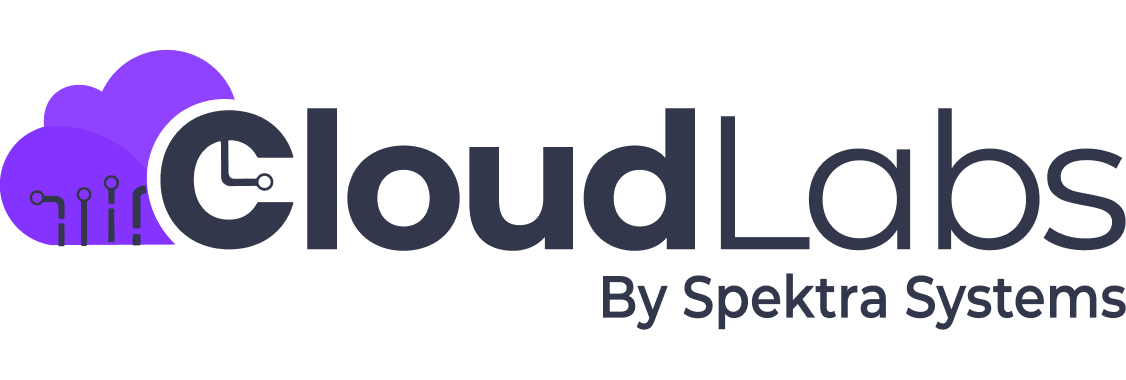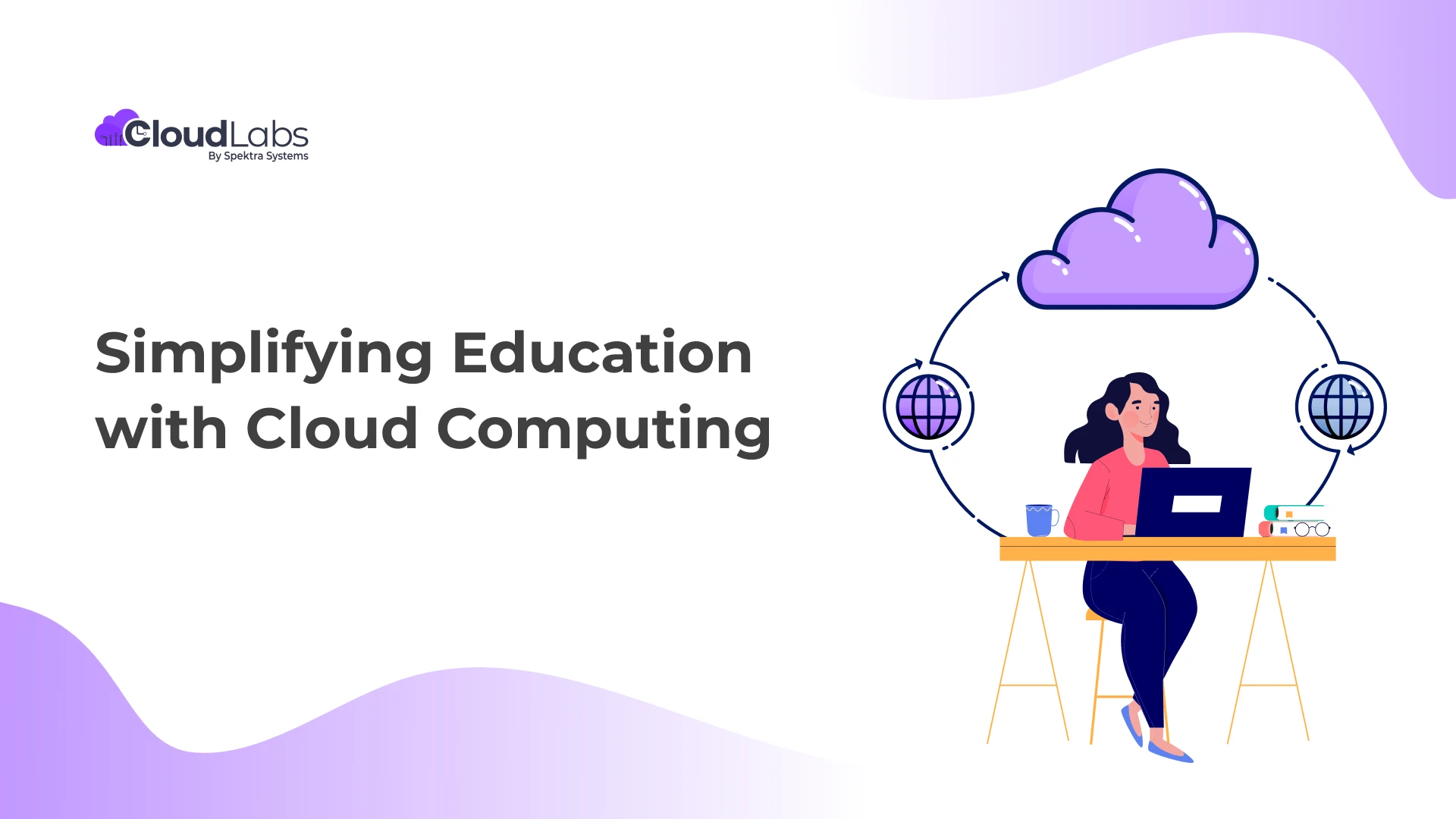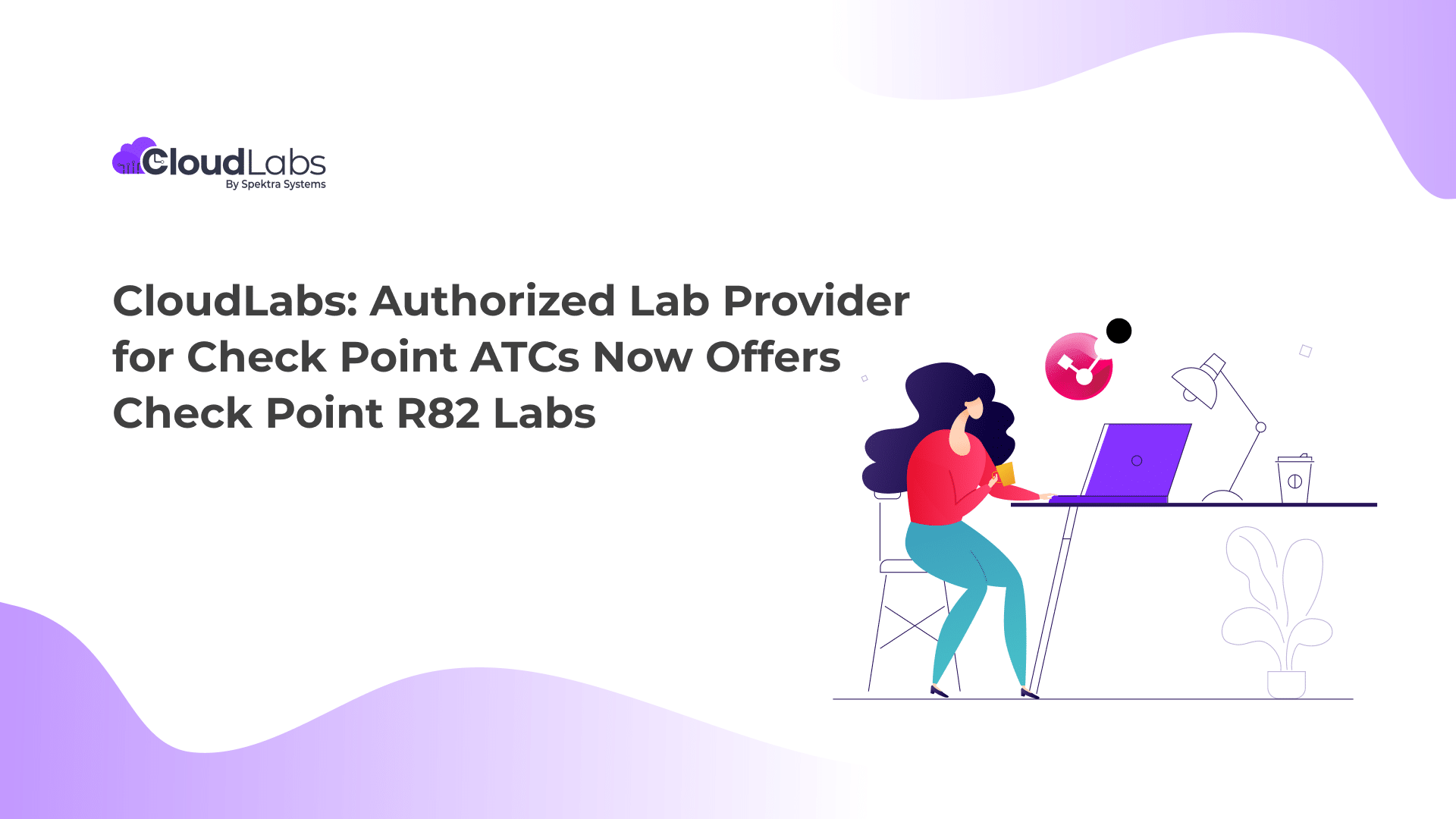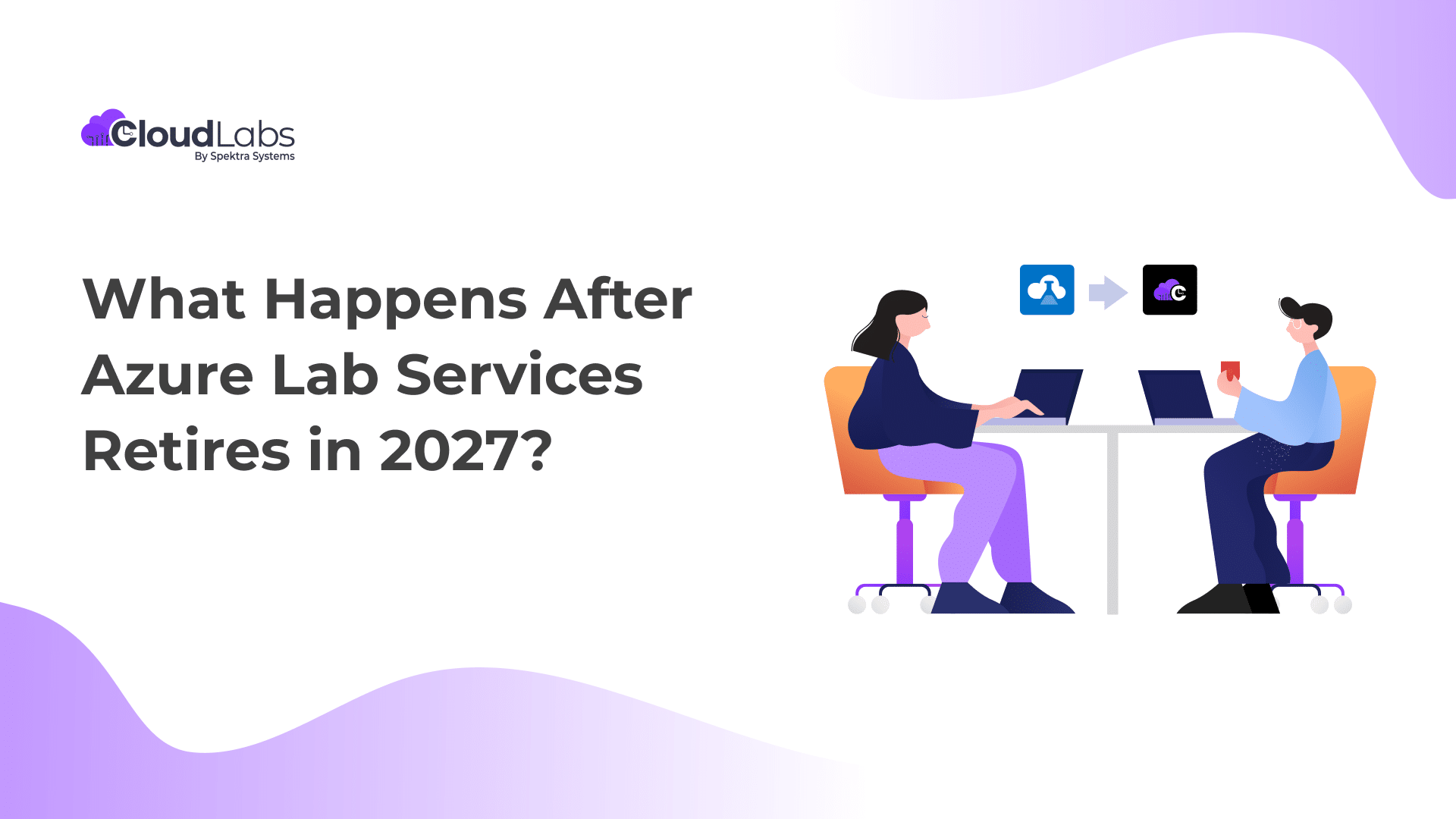Educators today face packed schedules and mounting pressures, from lengthy lesson prep to endless paperwork. It’s no wonder teacher stress and burnout are at all-time highs. What if technology could lift some of that burden? Cloud computing is emerging as a game-changer, promising to streamline school operations and create stress-free classrooms. In this blog, we explore how cloud computing reduces educator stress and enhances learning delivery – backed by the latest stats, research on teacher workload, industry offerings, and real-life examples of cloud-powered education success.
The Rapid Rise of Cloud Adoption in Education in 2025
The past few years have seen an explosive growth in cloud adoption across the education sector. Schools and universities worldwide are moving their IT infrastructure and services to the cloud at an unprecedented rate. “The global cloud computing in education market is estimated at $46.3 billion in 2024 and projected to grow over 21% annually in the coming decade.
Multiple surveys reinforce this trend. In the UK, roughly 64% of schools are already using some form of cloud technology in their IT infrastructure. And it’s not just early adopters anymore – virtually every institution is getting on board. A recent global index found 95% of education organizations plan to increase their cloud budgets in 2024 with 92% expecting to store even more data in the cloud. Such numbers signal that cloud computing has moved from a niche idea to a mainstream pillar of educational technology. Schools are clearly recognizing the cloud’s potential to improve flexibility, scalability, and cost-efficiency in delivering education.
This surge in adoption has only been accelerated by the COVID-19 pandemic, which forced a rapid shift to remote learning. Global K–12 and higher education cloud spending topped $100 billion in 2021 and is on a ‘rocket ride’ upward with a 16.5% annual growth rate through 2030. With education cloud use skyrocketing in every region, it’s clear that the cloud is here to stay in our classrooms.
Educator Stress and Administrative Burden: A Reality Check
Why are educators and administrators so eager for digital transformation? A big reason is the pressing need to reduce teacher stress and administrative workload. Numerous studies have documented how traditional school operations, and a lack of digital infrastructure contribute to educator burnout.
Consider the average teacher’s workweek: Teachers report working about 57 hours per week, yet less than half of that time is spent actually teaching students. The majority of their time is consumed by planning, grading, meetings, and clerical tasks. These administrative burdens – many of which could be streamlined with better technology – are a major source of stress.
In a 2024 survey in the UK, “teachers were found to be spending up to 60 hours a week on job duties, including lesson prep and ‘excessive administrative tasks’ outside the classroom. Not surprisingly, such workloads are linked to high burnout and attrition in the profession.
Research confirms that “lack of support for administrative tasks is one of the top stressors for teachers. In practical terms, this often means educators drowning in paperwork, manual data entry, and duplication of efforts due to outdated systems. Every hour spent wrestling with antiquated tech or spreadsheets is an hour taken away from student interaction or personal downtime, and it adds up quickly.
The recent push to online and hybrid learning further highlighted how a lack of digital infrastructure can compound stress. When the pandemic hit, many schools without robust cloud tools struggled – teachers had to scramble to adapt with minimal support. Globally, educators (especially in regions with limited tech resources) faced the daunting task of moving classes online almost overnight, with little training or reliable infrastructure, greatly increasing their workload and anxiety. In short, the education system’s old way of doing things – fragmented software, on-premise servers, and paper-based processes – has been weighing teachers down. This is where cloud computing offers a much-needed respite.
How Cloud Computing Eases the Load for Schools
Adopting cloud computing isn’t just an IT upgrade; it’s a strategic move to lighten the load on educators and streamline school operations. By shifting key services to the cloud, institutions remove many of the time-consuming maintenance and administrative tasks that cause stress, allowing teachers and staff to focus on what truly matters: teaching and learning.
- Eliminating Infrastructure Headaches
In simple terms, cloud computing eliminates the burden of complex on-premises IT infrastructure by offloading it to offsite servers managed by a provider.
Schools no longer need to maintain large physical data centers or racks of servers on campus. The cloud provider handles hardware upkeep, updates, and backups. This is a huge relief for district IT teams and educators alike – no more worrying about server crashes, storage limits, or software installs on every individual machine.
As one educator put it, You’re no longer managing servers… you don’t have to worry about buying, maintaining or securing all those servers.
All of that is taken care of in the cloud environment. For a school with a small IT staff, shedding these infrastructure headaches can dramatically reduce day-to-day stress and firefighting.
- Streamlined Administration
Cloud-based education platforms often include tools that automate and simplify administrative tasks. For example, modern Learning Management Systems (LMS) and student information systems hosted in the cloud can handle attendance tracking, grading, and reporting with minimal manual effort.
Some cloud services even leverage AI to assist with routine tasks. “One leading cloud provider’s education platform allows schools to create personalized student learning experiences and streamline administrative tasks using AI services.
Instead of chasing paperwork, teachers can let the cloud handle things like distributing assignments, collecting homework, or analyzing quiz results. This not only saves time but also reduces errors and duplication. Instructors can delegate menial tasks to cloud-based systems and gain back precious hours in their week. The result is a lighter administrative load and fewer late nights spent on paperwork.
- Anywhere, Anytime Access (Flexibility)
A key benefit of the cloud is the flexibility it provides to both educators and students. Because data and applications live online, teaching and learning can happen from anywhere, at any time, with an internet connection.
This was invaluable during pandemic disruptions, but it’s equally useful day to day – whether a student is home sick or a teacher is at a conference, they can access everything they need remotely. Cloud-based classrooms mean students and instructors can collaborate in real-time from any location without interruption.
Files, lesson materials, and educational apps are available on-demand, no matter if you’re in the school building, at home, or on a field trip. This anytime/anywhere access reduces the stress of lost class days and helps keep learning continuity. It also enables more flexible scheduling and personalized pacing for students, which can improve outcomes.
- Reliability and Security Built In
Reputable cloud providers offer robust uptime, data backup, and security measures that most school IT departments could not afford on their own. This means less stress about losing important data or having systems go down at the worst time (like during finals week).
Cloud systems keep data safe and accessible even if local devices fail.
And with automatic backups, educators don’t need to worry about making manual saves or maintaining backup drives. Security compliance is also handled at a high level – cloud providers invest heavily in cybersecurity, relieving schools of that burden. Knowing that student records and lesson plans are protected by world-class security gives teachers and admins peace of mind, eliminating the anxiety of potential data breaches or technical failures disrupting classes.
- Cost-Effectiveness and Scalability
Budget constraints are a constant source of tension in education. Cloud computing introduces cost savings through a pay-as-you-go model that lets schools pay only for what they use and avoid big upfront investments.
There’s no need to purchase costly servers or software licenses for each machine; instead, schools can subscribe to cloud services as operational expenses. This shift to cloud-based operating expenses (OpEx) versus capital expenses can significantly ease budget pressures on school leaders.
Moreover, the cloud is highly scalable – if an enrollment spike or new program requires more computing power or storage, it can be provisioned instantly without buying new hardware. Conversely, schools can scale down services during off-peak times.
This elasticity ensures that educators always have adequate resources and performance, without waste or over-provisioning. It removes the stress of outgrowing one’s infrastructure or overspending on unused capacity, making financial planning more predictable.
Cloud Services Tailored for Education: An Overview
Recognizing these benefits, major technology providers have developed cloud offerings specifically tailored to the education sector. It’s worth noting how the big players – without naming competitors directly – are contributing to cloud-powered learning, as this highlights the broad momentum and available resources for schools venturing into the cloud.
Flexible Infrastructure and School Solutions
One leading cloud provider (serving a community of hundreds to millions) has made education a priority, working with over 14,000 education institutions worldwide to accelerate digital transformation.
These cloud services provide schools with flexible, affordable infrastructure to support a range of needs – from streamlining IT operations and data management to enabling remote learning and collaboration.
For example, districts can easily set up secure virtual desktops for students, or create cloud-based contact centers for IT helpdesks and administration. The focus is on helping schools personalize learning and improve outcomes using the same kind of powerful cloud tools employed by enterprises.
Integrated Platforms with AI and Analytics
Another major cloud platform integrates deeply with familiar classroom tools and adds advanced capabilities like artificial intelligence. This provider emphasizes a flexible, scalable, and secure cloud + AI platform to enhance learning experiences and ‘save time to focus on what matters most.
In practice, this means schools can use cloud-based AI services to automate tasks like grading quizzes or analyzing student performance data – tasks that used to eat up hours of teachers’ time. The cloud platform can centralize an institution’s data and analytics to turn insights into action, helping educators identify which students need more support or which teaching methods work best.
All of this is backed by the company’s strong security and compliance guarantees, important for maintaining student privacy. By empowering everyone with AI and data-driven tools, this cloud solution aims to reduce administrative load and let teachers concentrate on instruction.
Collaboration and Big Data for Learning
A third major cloud provider offers an education suite that cuts through IT complexity and focuses on collaboration, research, and big data needs. Their approach is to provide solutions for storage, analytics, and machine learning that are simple to deploy – so schools and even student groups can harness advanced technology without a legion of IT staff.
They also support open-source technologies and interoperability, which is great for academic environments that value flexibility and customization.
Notably, this platform provides extensive training resources and hands-on labs for students (often at no cost), allowing learners to build cloud skills and earn certifications with guided programs.
The emphasis is on being open-minded and innovative: students and educators can use cutting-edge tools to, say, analyze large research datasets or develop apps for a class project, all within a secure cloud sandbox.
Such initiatives not only improve learning outcomes but also prepare students with in-demand digital skills.
In summary, the cloud industry is rallying around education. From free online courses and credits for students, to specialized cloud portals for school administrators, the biggest tech companies are investing in making cloud adoption easier for schools. This widespread support means educators have a wealth of options and expert-backed services to draw on. And importantly, these are proven, reliable solutions – not experimental tech – which lowers the risk for schools and further reduces the anxiety of moving to the cloud.
Hands-On Learning with Virtual Labs: Less Stress, More Engagement
One of the most exciting and impactful aspects of cloud computing in education is the rise of virtual labs. Virtual labs are cloud-based environments that allow students to perform experiments and practice skills in a simulated setting, anytime and anywhere. They have become a cornerstone of hands-on learning in the digital age, delivering practical experience without the logistical headaches of physical labs.
What Are Virtual Labs?
In a traditional lab setting, schools need expensive hardware, dedicated space, and constant maintenance – whether it’s a computer lab for coding classes or a science lab for chemistry experiments. Virtual labs replicate these experiences online.
Through cloud platforms, students can access simulation-based labs in various disciplines remotely.
For instance, a student can spin up a virtual chemistry experiment, a coding sandbox, or even a full networking environment on a standard laptop via the internet. They can tinker, make mistakes, and learn by doing, all in a safe virtual space.
The cloud backend takes care of providing the necessary computing power and resets the lab for each use. This means students can feed their curiosity and learn advanced concepts through remote experimentation without needing physical equipment on hand.
Why Virtual Labs Reduce Classroom Stress
Virtual labs greatly simplify the logistics of experiential learning, which is a huge relief for instructors and IT staff. There’s no need to prep hardware for each class or worry that an experiment will break something. Setup and teardown are instant and automated.
An educator can assign a hands-on lab exercise with a few clicks, and every student gets their own isolated cloud lab to work in. This ensures equity – all students have access to the same up-to-date tools and software via their browser, rather than contending with outdated computer labs or limited supplies.
It also reduces scheduling conflicts. If a student misses a lab session, they can simply access the virtual lab later from home. Instructors spend less time on operational details and troubleshooting and more time actually teaching and mentoring.
As CloudLabs describes, virtual labs offer secure, scalable environments for training and testing , removing the complexity of managing those environments from teachers’ shoulders.
Virtual labs are particularly powerful for technical and STEM education. Complex subjects like coding, cybersecurity, data science, or engineering become far more approachable when students can learn by doing in real time.
Instead of passively reading about networking, for example, a student can configure a virtual network in a cloud lab and see how it works firsthand. This kind of active learning boosts engagement and retention.
At the same time, teachers aren’t stressed about things going wrong – if a student’s virtual network crashes, it doesn’t affect anyone else, and the student can simply reset their lab.
The cloud platform handles all the heavy lifting behind the scenes, from provisioning servers to installing software, which drastically reduces the IT workload and anxiety typically associated with hands-on courses.
Platforms like CloudLabs have emerged to make virtual labs easy to implement. CloudLabs provides a catalogue of pre-built lab environments for topics ranging from basic IT skills to advanced artificial intelligence.
Educators can also customize labs or create their own to align with their curriculum. Because CloudLabs runs on top of major cloud providers, it can offer multi-cloud lab experiences (e.g., labs on AWS, Azure, or Google Cloud) without educators having to manage separate accounts on each.
This one-stop approach further reduces complexity. The platform also handles user management, scheduling, and tracking of lab usage, so that administrators have insight into how labs are being used and students’ progress – without extra paperwork.
In short, virtual lab platforms act as a force multiplier: a single instructor can effectively oversee many students doing complex practical work, with the cloud ensuring each student gets a reliable, isolated environment to explore in. This dramatically lowers the stress of running lab sessions or technical courses, traditionally one of the most resource-intensive parts of education.
Success Stories: Cloud-Powered Education in Action
The benefits of cloud computing and virtual labs aren’t just theoretical – many educational institutions have already experienced them firsthand. Let’s look at a few real-world examples and case studies that demonstrate how embracing the cloud can reduce operational complexity and improve educational outcomes:
Queen’s College – Improving Student Experience and Cutting Costs
Queen’s College (an institution known for its commitment to innovation) recently adopted cloud-based hands-on lab environments as part of its tech curriculum.
The college was able to enhance the student learning experience and achieve greater cost efficiency by using virtual labs.
Students gained access to cutting-edge software and cloud resources for their coursework without the college having to invest in physical computer labs or high-end PCs for everyone.
From the faculty’s perspective, setup for lab assignments became much simpler and issues like software compatibility disappeared, since everything ran in the cloud.
This case illustrates how even budget-conscious institutions can do more with less stress on finances and staff by leveraging cloud labs.
Wayne Community College – Hands-On AI Learning Made Possible
At Wayne Community College in North Carolina, instructors faced the challenge of teaching artificial intelligence concepts to students with limited access to advanced hardware.
The college turned to a virtual lab solution (CloudLabs’ AI-900 labs) to deliver the course.
It successfully provided an impactful, hands-on AI learning experience to students, all through the cloud.
Each student could experiment with AI models and data in a personal cloud lab, practicing skills that would normally require expensive setups.
The instructor, freed from worrying about configuring each student’s environment, could focus on mentoring and explaining concepts.
This cloud-enabled approach not only made a complex subject accessible but also greatly reduced the operational complexity of running an AI course.
The positive feedback from students and faculty underscored how cloud computing can open doors to advanced topics without adding stress on educators.
University of Florida – Bringing AI to K-12 Education
It’s not just colleges that benefit – cloud computing is helping expand the frontiers of K-12 education as well.
A team at the University of Florida recently built an AI curriculum for K-12 schools with the help of a cloud platform.
Using virtual labs and cloud-based tools, they created age-appropriate, hands-on AI and coding exercises for elementary and high school students.
The cloud handled all the complex processing behind the scenes. Teachers didn’t need to be AI experts or set up any infrastructure; everything was ready to go in the cloud environment.
This initiative massively reduced the complexity of introducing such advanced content in K-12.
The program has been a hit – sparking student interest in STEM while keeping teachers’ stress low since the platform is doing the heavy lifting.
It showcases the power of cloud-based virtual labs to democratize learning opportunities in a manageable way.
Conclusion: Embracing the Cloud for a Stress-Free Classroom
It’s often said that “it takes a village” to educate a child – today, that village includes technology like cloud computing.
As we’ve seen, cloud solutions are directly addressing many pain points that have long plagued educators.
By modernizing infrastructure, automating routine work, and expanding access to quality learning tools, the cloud is paving a path toward truly stress-free classrooms.
For educators and school leaders considering the jump, the message from both data and real-world experience is encouraging.
Cloud computing is no longer an untested frontier; it’s a mature, robust option that comes with clear benefits: reduced teacher workload, improved collaboration, cost savings, and innovative teaching methods.
And thanks to broad support from major cloud providers and specialized platforms like CloudLabs, transitioning to the cloud has never been more feasible.
Schools can start small – migrate a single application or introduce a few virtual labs – and gradually expand their cloud usage as comfort and results grow.
Ultimately, simplifying education with cloud computing isn’t just about technology for its own sake. It’s about creating an environment where teachers can teach and students can learn without unnecessary obstacles or stress.
Imagine a classroom where a teacher isn’t fumbling with outdated software or drowning in paperwork, but rather is free to interact with students and personalize lessons.
Imagine a school where IT systems simply work, everywhere and anytime, so that snow days or network glitches no longer disrupt learning.
That is the promise of the cloud-driven, stress-free classroom.
The transition is already underway globally, and those who have embraced it are reaping the rewards of greater efficiency, flexibility, and educational impact.
As your institution charts its course forward, consider the cloud not as a challenge, but as a solution – a partner in delivering the best education possible with the least hassle.
By tapping into cloud computing and virtual labs, we can empower our educators, engage our students, and truly simplify the art of teaching and learning.
The path to a stress-free classroom is on the horizon, riding on the cloud. Let’s take it.

Harshal Charde is an accomplished Principal Cloud Solution Architect at Spektra Systems, with extensive expertise in Microsoft Technologies, Hyper-V, Cloud Computing, and Virtualization. His proficiency in these areas allows him to design and implement cutting-edge solutions for clients, driving business growth and innovation.




